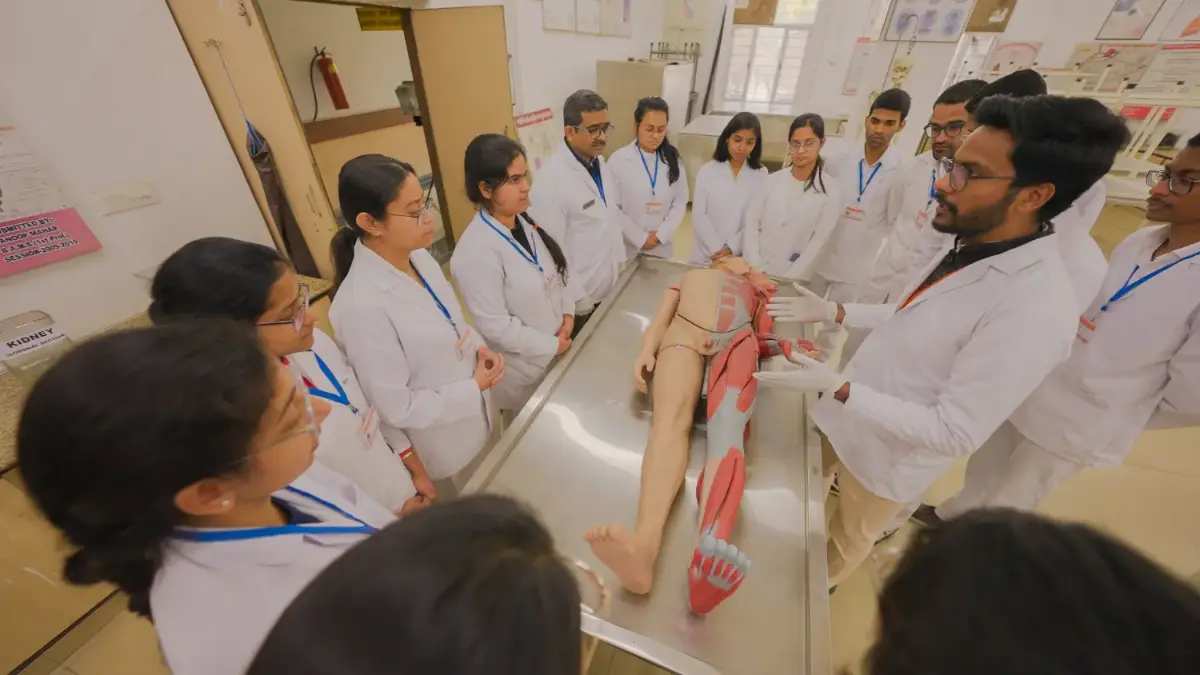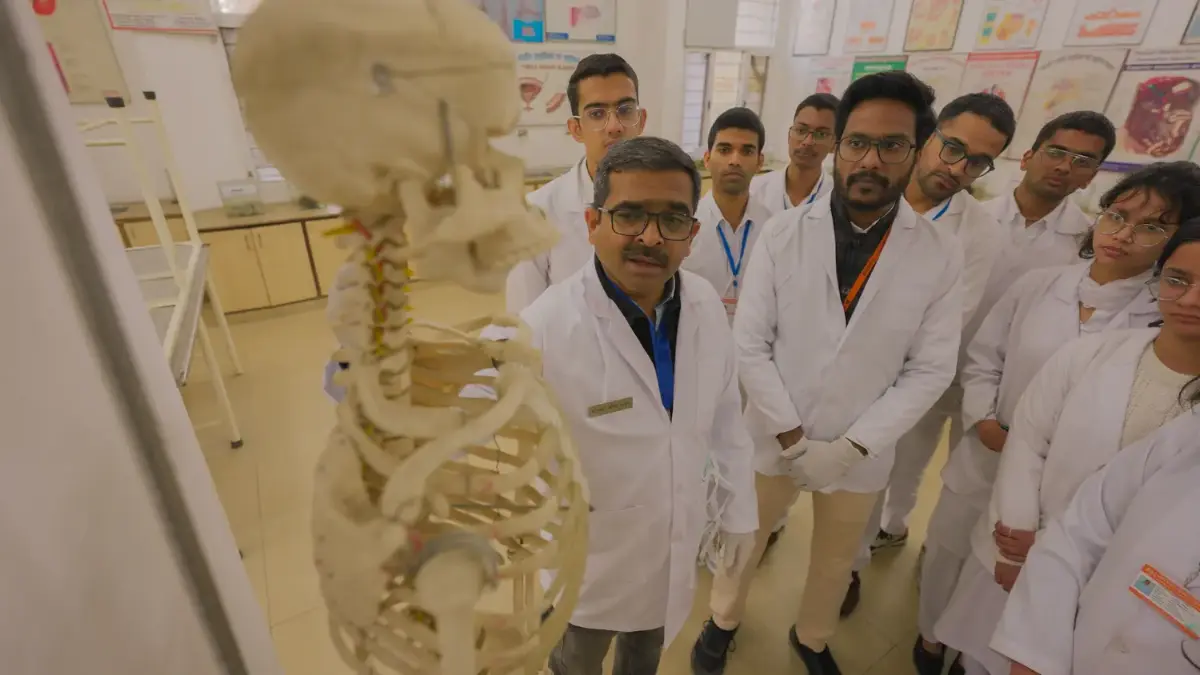The Rachana Sharir department at Patanjali Bhartiya Ayurvigan Evum Anusandhan Sansthan plays a pivotal role in imparting knowledge of human anatomy according to Ayurvedic principles. It focuses on the structure and function of the human body from a holistic perspective, emphasizing Ayurvedic concepts of doshas (bio-energies), dhatus (tissues), and srotas (channels). Students here study the intricate details of anatomical structures through both theoretical teachings and practical demonstrations, aligning traditional Ayurvedic teachings with contemporary anatomical sciences.
The department integrates ancient Ayurvedic texts such as Charaka Samhita and Sushruta Samhita with modern anatomical knowledge to provide a comprehensive understanding of the human body. Practical sessions include dissection of cadavers and hands-on learning experiences to deepen students' understanding of anatomical structures and their relevance to health and disease in Ayurveda.
Furthermore, the department fosters research and scholarly activities aimed at advancing knowledge in Rachana Sharir, contributing to the wider field of Ayurvedic medicine. By bridging ancient wisdom with modern anatomical sciences, Patanjali Bhartiya Ayurvigan Evum Anusandhan Sansthan's Rachana Sharir department prepares students to apply Ayurvedic principles in diagnosing and treating ailments, thereby nurturing future practitioners grounded in both tradition and innovation


Vision
To become a leading center of excellence in the study and research of Rachana Sharir.
Mission
Education and Training: Provide comprehensive education and training in Rachana Sharir to students and practitioners, ensuring a deep understanding of Ayurvedic anatomical concepts.
Research and Development: Conduct rigorous research to explore the anatomical principles described in Ayurvedic texts, validating them through scientific methods and contributing to the global body of anatomical knowledge.
Integration of Traditional and Modern Approaches: Bridge the gap between traditional Ayurvedic wisdom and modern anatomical science.